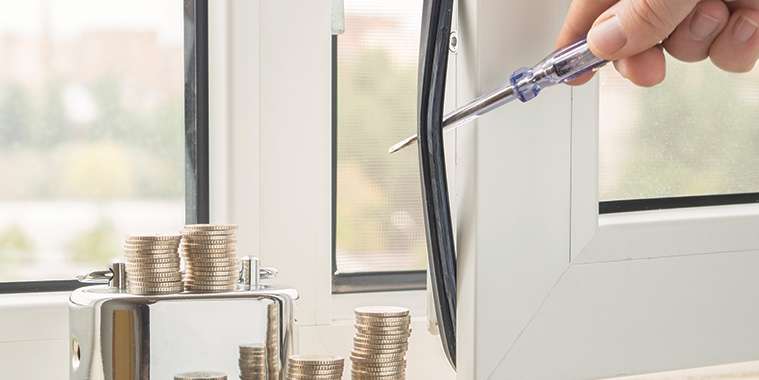It doesn’t matter if your home was built in 1968 or 2018: There’s a good chance it has at least a few air leaks. So what, you ask? Well, an increase in unwanted airflow could cut into your cash flow in the long run.
“If you’re not sealing your home against air leakage, you’re significantly reducing your energy efficiency,” says Michael DiMartino, senior vice president of installations at Power Home Remodeling.
In addition to losing heat or air conditioning, you could also be overworking your HVAC system, which could shorten its life span.
So where are these air leaks most likely to occur? Let’s discuss how to test for air leakage and where to search both inside and outside your home.
Signs of an air leak
A generally drafty home is one of the most obvious signs of some air leakage (even if the actual source of said draftiness may be tougher to determine, since it’s usually not just from doors or windows). Another likely sign: If you notice an increase in your monthly utility bills, or you discover that it costs more to heat and cool your house compared with a similarly sized home in your neighborhood. An air leak could also be throwing your thermostat out of whack.
If you live in a two-storey home with a basement and notice the second floor is hot but the basement is very cold, your ductwork is probably leaking.
Do you dust all of the time, but find that it accumulates faster than you can keep up? That’s a good indicator of air leakage in a home’s supply ventilation system.
“This can cause negative pressure in the house, which draws dusty air in from attics, crawl spaces, and garages,” Summers says. And if symptoms of common outdoor allergies tend to get worse when you’re indoors, it’s probably because outdoor air is leaking in, messing up your indoor air quality.
Air leaks outside the home
When inspecting your property for air leaks, “be on the lookout for gaps or cracks in the foundation, but also be advised that foundation cracks can be indicative of more significant issues than air leakage.
You should also look for any cracks or gapping in the caulking around doors and windows.
If windows are steamed up on the inside, this means the seal is broken and can create air leakage.
Inspect all corners of brick and siding, chimney chases, and exterior electrical. Look for gaps, holes, or cracks, and consider sealing them with cement or caulk.
Air leaks inside the home
Most of the major leaks are under the insulation in your basement and attic.
Here, you will find holes where the electrical wires, phone and internet lines, and HVAC and plumbing pipes run down the walls. Seal those holes with caulking or expanding foam.
It is also recommended to look for areas where studs are exposed and not covered by drywall or plaster.
Some of the top places are behind knee walls, above dropped ceilings and soffits, and above angled ceilings over stairs. If you push back the insulation, you can find many of these leaks.
Dryer vents are another common source of air leakage
If you detect an odour in your laundry room while the dryer is running that is similar to wet clean laundry, or if it appears to be humid, steamy, or you see a lot of lint, that may mean piping is loose and the air is escaping into your laundry room.
The best thing homeowners can do is take a video behind the dryer while it’s running and see if there are dust bunnies in the air.
How to test for air leaks
Looking for holes can confirm air leaks, but there are also several DIY methods you can try.
Hold a candle or lighter in front of a questionable area to see if there’s a draft. If the flame flickers, there’s air movement occurring. (Just make sure the HVAC is off.)
If the weather is hot outside, turn on your AC so the home gets cold; if the weather is cold outside, turn on your heat so it gets warm. Walk the perimeter of your home and run your hand along your baseboards, windows, doors, and electrical outlets to see if there is a difference in temperature, he says. If you notice a significant difference, it means you have an air leak.
The most effective way to inspect for air leaks, however, is to hire a professional to perform an energy audit.
— houselogic.com



